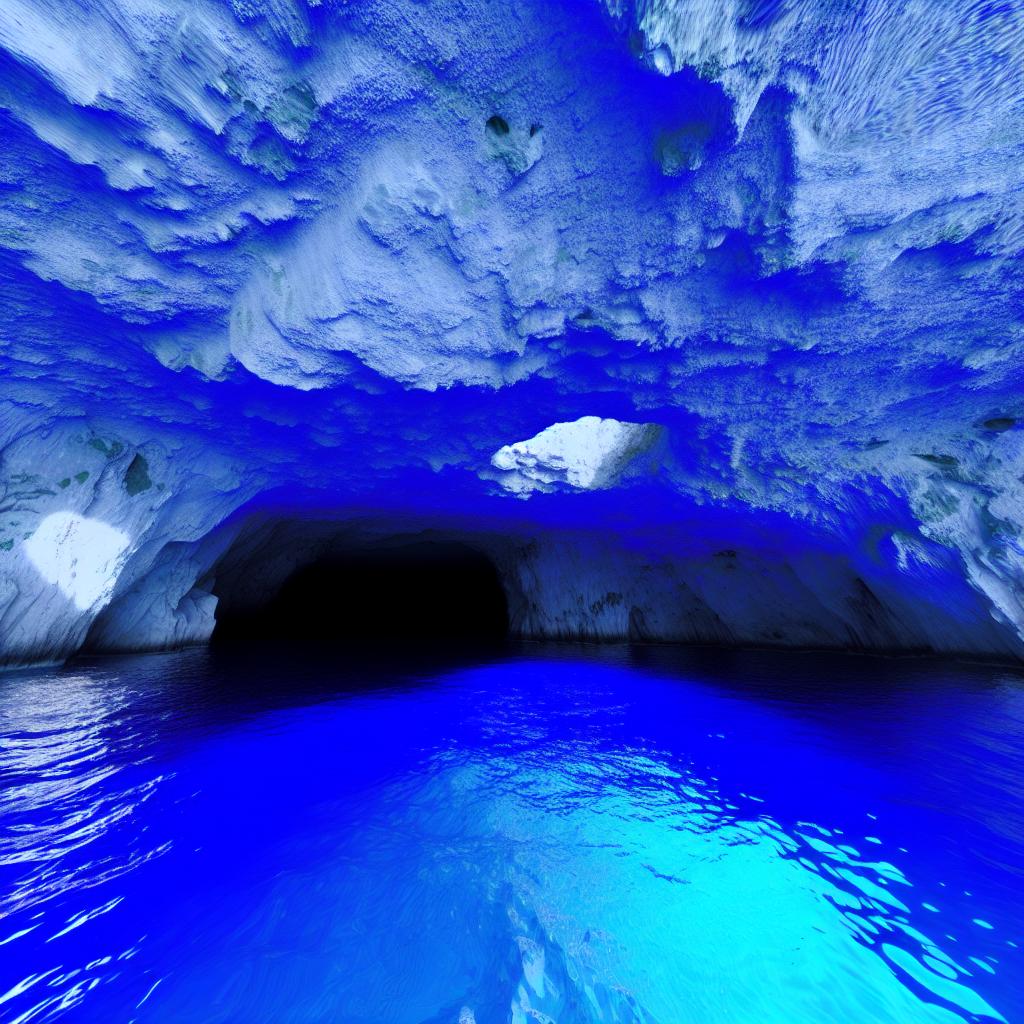Location and Overview
The Blue Grotto is a renowned sea cave located on the coast of the island of Capri, Italy. Known for its brilliant blue waters, the grotto is a popular tourist destination, attracting visitors from around the world. This natural wonder is situated on the island’s northwestern coast and is accessible primarily by boat or by swimming. The island of Capri itself is a stunning destination that is steeped in rich history and natural beauty, making the Blue Grotto one of its premier attractions.
When approaching the Blue Grotto, visitors are often captivated by the picturesque landscape that surrounds it. The rugged cliffs of Capri provide a dramatic backdrop to the azure waters of the Tyrrhenian Sea, offering a picturesque setting that photographers and nature enthusiasts find irresistible. As you journey to the Blue Grotto, you pass along Capri’s scenic coastline, which is dotted with charming villages and lush vegetation, providing a serene escape from bustling city life.
History and Significance
The Blue Grotto holds a place in history that dates back to ancient Roman times. It is said to have served as a personal swimming pool for the Roman Emperor Tiberius, who moved to Capri in AD 26. There is some evidence to suggest that the cave was used by Tiberius and his guests as a private retreat, complete with statues and luxurious amenities. Visitors today can still sense the historical significance of the site as they enter a place once favored by royalty.
Despite its early fame, the Blue Grotto was largely forgotten for centuries. It wasn’t until the 19th century that it was rediscovered by the German writer August Kopisch and painter Ernst Fries, who brought it to the attention of the wider world. Since then, the grotto has been a site of interest for travelers and scientists alike, intrigued by its optical phenomena and historical context. The rediscovery of the Blue Grotto played a significant role in Capri’s rise as a major tourist destination in the modern era.
Natural Phenomenon
The distinctive blue coloration of the grotto is a natural wonder resulting from sunlight entering the cave through an underwater opening and reflecting off the limestone floor beneath the water. This interaction of light and water creates a light scattering effect, giving the water a striking shade of luminous blue and causing objects submerged in the water, such as oars or swimmers’ bodies, to have a silvery appearance.
This extraordinary optical effect is one of the main reasons for the grotto’s worldwide renown and is best observed during the midday sun when the sunlight is directly overhead, providing the strongest illumination. The phenomenon is a spectacular demonstration of nature’s ability to create beauty through simple interactions between light, water, and stone.
Access and Visiting
Access to the Blue Grotto is an adventure in itself, primarily granted through small rowboats that can accommodate about four passengers at a time. These boats are typically operated by skilled local boatmen who guide visitors into the cave, offering an element of local charm to the experience. The mouth of the cave is quite narrow, so visitors must be prepared to lie back as the boat passes through the entrance, a maneuver that requires timing and skill determined by prevailing tidal conditions.
Tours to the Blue Grotto often depart from the marina in Capri, making it an integral part of many visitors’ Capri experience. These excursions offer an opportunity not only to explore the Blue Grotto but also to appreciate the island’s surrounding beauty. Visitors are advised to check local tidal conditions to ensure the cave is safely accessible during their visit, as conditions can sometimes make entry impossible, particularly in adverse weather.
Conservation and Guidelines
Due to its popularity, the Blue Grotto is subject to certain regulations designed to protect its unique natural environment. Visitors are advised not to touch the water or the limestone walls inside the cave, as doing so could potentially damage the delicate ecosystem. These guidelines are intended to maintain the environmental integrity of the Blue Grotto for future generations, ensuring that this natural wonder remains unspoiled.
Conservation efforts also extend to the surrounding area, which is a part of a broader initiative to preserve the natural landscapes of Capri. Visitors can do their part by following guidelines provided by tour operators and respecting the pristine natural environment. For more detailed advice on visiting the grotto, travelers may wish to consult travel resources or the official tourism websites for Capri.
The Blue Grotto remains one of Italy’s most remarkable natural attractions, offering a unique blend of natural beauty and historical significance. Whether you are drawn by the science of its blue waters or the allure of its ancient history, the Blue Grotto provides a memorable experience for all who venture to its shores. As you plan your visit, you might find further information about Capri’s attractions and accommodations through online resources or local guides, enhancing your experience of this alluring island destination.

